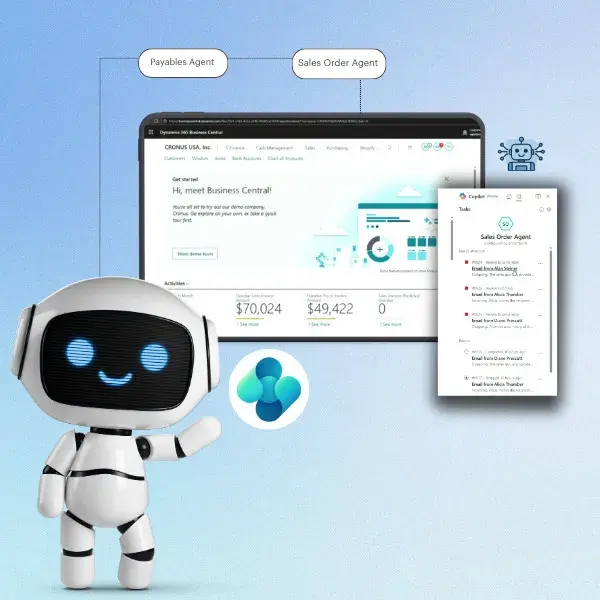Investing in an ERP is one thing, getting an acceptable ROI is another. A vast majority of ERP implementation projects fail to meet their stated objectives, within the planned timelines. Making an assessment of the success of a project requires establishing the organizational objectives you are trying to accomplish through the project, and of course identifying the success criteria.
An ERP implementation involves configuring processes for your business, doing the needed customizations and external system integrations (if any), moving your master data to the new system, setting up user roles & permissions, and training them. Installing the software also used to be a key task, before we started using cloud-based software. Choosing the right partner for implementing your ERP system is perhaps more important than making the ERP product selection. Domain, technical & product competence of the partner, and industry experience play a key role and should be the key selection criteria. Make sure to do reference checks before signing on a partner.
A lot of things must be done right to ensure project success. And a key to success is the identification of that minimum set of activities & processes which must be done right. We will talk about this in another blog. For now, we are going to talk about some of the most common failure points of an ERP implementation project.
Absence of clear project objectives & success criteria'
When we are not clear on what we are trying to accomplish, just about anything would look ok. Clearly articulated objectives give teams a mission to pursue and commit the needed resources. It helps align people, unify priorities, and acts as a great yardstick to measure progress. Clear success criteria can act as checkboxes to bring a sense of accomplishment, as we make progress. The objectives mustn’t be seen only as process automation, or routine reporting. Objectives must be seen in terms of the Digital Transformation the project is expected to bring to your customer experiences, empowering of the employees, transformation to products & service offerings, and operational efficiencies. It’s only then that one can get the desired ROI from the project.
Not going Agile or Hybrid-Agile
Sticking to waterfall methodology has proven to be one key reason for projects to significantly overshoot their budgets and timelines. Waterfall tends to become a documentation-heavy methodology. These documents are never complete, and never fully understood by the users. Writing the ‘as-is’ and ‘to-be process documents is a common practice, and they can sometimes become a trap. The right way to implement an ERP has always been to minimize customization. When the project is however started with ‘as-is’ and ‘to-be, the project teams on both sides get blinded and keep making uncontrolled changes to the system.
Not dedicating a Product Owner
Appointing a Product Owner (by the customer) and empowering him/ her with needed decision-making authority, is supercritical for the success of an ERP project. The Product Owner participates in a daily scrum with the project teams and works as a peer to the project manager from the implementation partner. This role brings the needed focus on the project and helps keep it on track. It’s best to identify a senior internal person as the product owner, someone who understands or at least is deeply interested in understanding – Agile methodologies. Scrums & Sprints require active involvement from the user teams throughout the project. It’s important for the organization to free up the identified product owner from other routine responsibilities, or significantly reduce those responsibilities.
Not focusing on Test Cases & Test Data development
ERP systems need to be tested well before going live with them. This requires discipline and rigor. Adhoc, unplanned testing invariably leads to disastrous results. As organizations adopt agile and release Sprints, the users must test each sprint as it becomes available. Identifying, conceptualizing, and writing test cases in advance is absolutely vital to succeed. Both, the test cases and test data must be representative of all transaction types, take into account boundary condition, and system load expectations. Some testing can be done only when the entire system is ready. Test cases for this end-to-end testing must also be identified, along with test data.
Insufficient focus on user training
Users play a vital role in the development and deployment of ERP systems. User training must be done as early as possible in the project. One doesn’t have to delay this right to the UAT stage, as is sometimes done when adopting waterfall methodology.
Heavy customization
Minimizing customization is key to having an efficient and easily maintainable system. This can also significantly reduce project timelines and costs. To achieve this, however, the users need to understand the standard product functionality well and discuss with the implementation partner team what are the must-do customizations. Heavily customized systems usually become very cumbersome – both in user experience and performance. It is very much possible that adoption of the standard system requires the customer to tweak some of the business processes. Wherever possible, this must be evaluated.
Selecting the right product
Not the number 1 in this list, but selecting a right product is vital. Even though every known ERP product has a significant number of successful as well as failed implementations, the rapid evolution on technology front in the past few years is making this selection process more important than ever before. Global products like Microsoft Dynamics always remain at the cutting edge of technology. Companies like Microsoft have been making massive investments in technologies around cognitive services, machine learning & AI. Microsoft keeps bringing these capabilities to its product line, bringing to customers benefits of modern applications. An additional massive advantage the Microsoft Dynamics solutions bring to customers is – availability and out-of-box integration between ERP & CRM components, plus the strength of the integrated with Power Platform.
Endnote
The landscape of enterprise solutions has undergone a fundamental shift in the last some years. While the primary focus until only a few years ago used to be ‘automation’, the focus now is on ‘digital transformation’. Businesses need clarity of vision, a competent consulting & implementation partner, and a world-class product to succeed. If you are looking to embark on your digital transformation journey, reach out to Alletec, and let us help you make your journey more predictable.





